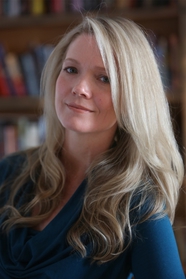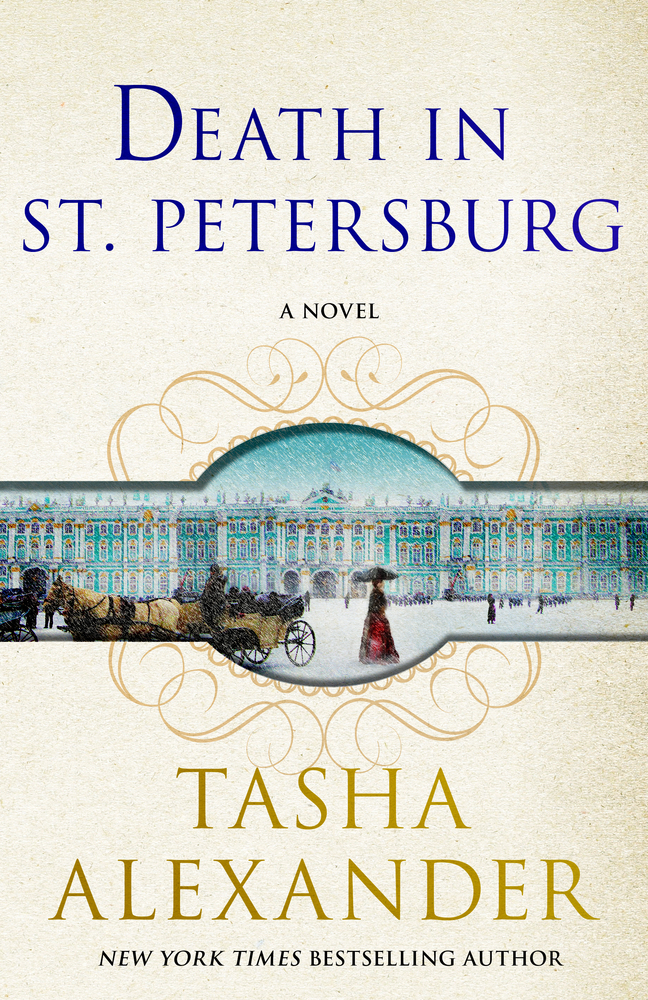 Tasha Alexander is the author of the Lady Emily mystery series. The latest installment, DEATH IN ST. PETERSBURG, was partly inspired by years of ballet training at the hands of Marie Buczkowski, who, in turn, studied in Paris with Olga Preobrajenska. Preobrajenska, a prima ballerina at Imperial Ballet and a character in Alexander's new novel, fled Russia after the revolution. Madame Buczkowski would be pleased that her former pupil focused on Russian ballet and spent a great deal of time in the Mariinsky Theatre watching the masters at work.
Tasha Alexander is the author of the Lady Emily mystery series. The latest installment, DEATH IN ST. PETERSBURG, was partly inspired by years of ballet training at the hands of Marie Buczkowski, who, in turn, studied in Paris with Olga Preobrajenska. Preobrajenska, a prima ballerina at Imperial Ballet and a character in Alexander's new novel, fled Russia after the revolution. Madame Buczkowski would be pleased that her former pupil focused on Russian ballet and spent a great deal of time in the Mariinsky Theatre watching the masters at work.
One hundred years ago, the Bolshevik’s October Revolution shook the world from its epicenter in Petrograd. St. Petersburg --- renamed during the First World War to sound less German --- was no stranger to upheaval. From its earliest days, the city was an exercise in strife.
The great cities of Europe stunned Peter the Great, and he knew that upon returning to Russia he needed to bring his country --- starting with its capital --- up to the standards of the west. He hated Moscow, but loved Amsterdam, and the latter provided the inspiration for the new capital he built on the Neva River. He ordered canals dug and buildings designed in a distinctly non-Russian style. The result? A city Nicholas I described as “Russian, but…not Russia.”
While Peter built for himself a humble log house (and often chose to stay there rather than in his palace), the rest of the city seemed to rise from the banks of the Neva as if by magic. So long, that is, if you weren’t one of the thousands of serfs who died in the process of building it. No number was too great to give the tsar what he wanted, and upon its completion, St. Petersburg --- Peter had no compunction against naming things after himself --- became the cultural center of the nation. It was not just the confection of colorful neo-classical buildings and wide pavements that inspired the citizens. Catherine the Great’s passion for collecting art, Marius Petipa’s association with the Imperial Ballet, and the contrast of bright summer nights and dark winter days all contributed to the values held dear in the city --- values that, in turn, spread through much of the rest of the country.
 In St. Petersburg, music matters, as does literature. Here, Dostoevsky was arrested (for, among other things, reading and discussing French philosophy) and faced a mock execution, an experience that understandably haunted him. He wrote about it in THE IDIOT, and his greatest novel, CRIME AND PUNISHMENT, carries the weight of the horror on its every page. Would his work have been so great without his immense suffering?
In St. Petersburg, music matters, as does literature. Here, Dostoevsky was arrested (for, among other things, reading and discussing French philosophy) and faced a mock execution, an experience that understandably haunted him. He wrote about it in THE IDIOT, and his greatest novel, CRIME AND PUNISHMENT, carries the weight of the horror on its every page. Would his work have been so great without his immense suffering?
The concept of Russian suffering is nothing new. It is forever bound with the Russian soul. St. Petersburg is a city where you are not allowed to wear your coat into a museum or theatre; to do so would be uncivilized. It is also a city that survived 900 days of siege in the Second World War, during which, eventually, there was no longer any way to heat buildings. At the Philharmonia, they heard Shostakovich’s Leningrad symphony and at the Mariinsky Theatre they watched the Kirov dance “Swan Lake.” Eventually, they were allowed to keep on their coats, even in these hallowed halls. They were starving, freezing and seeing their friends fall dead in the streets, but they still had culture, even if civilization was crumbling around them.
There is an undeniable connection between suffering and art --- be it literary, musical, visual or dance. Ballet provides one of the most striking examples, as dancers brutalize their bodies in order to give ethereal performances. But it’s not only art that has this oddly symbiotic relationship to hardship.
The Bolsheviks evolved in a city that was built --- literally --- on the bones of serfs. Did Peter’s willingness to raze all that came before him, from tradition to architecture and more, solidify a cycle of destruction? In many ways, the revolutions of 1917 stem directly from the work he started. How different are his savage acts from those instigated by the myriad anarchists and revolutionaries that followed him? Like Peter, they did not look to improve the present within its confines; they wanted total, radical change. They didn’t want the new without first destroying the old. In a way, one of the most famous members of the Romanov dynasty set into motion the mindset that would lead to its fall.
Peter’s capital was a triumph of architecture and culture. Although the serfs would not be free for nearly 150 years after his death, Peter the Great catalyzed the changes that would pull Russia out of the Middle Ages, setting his people on a course that would lead them to that memorable day in 1917, when the Bolsheviks stormed the Winter Palace. Once again, everything had changed.


